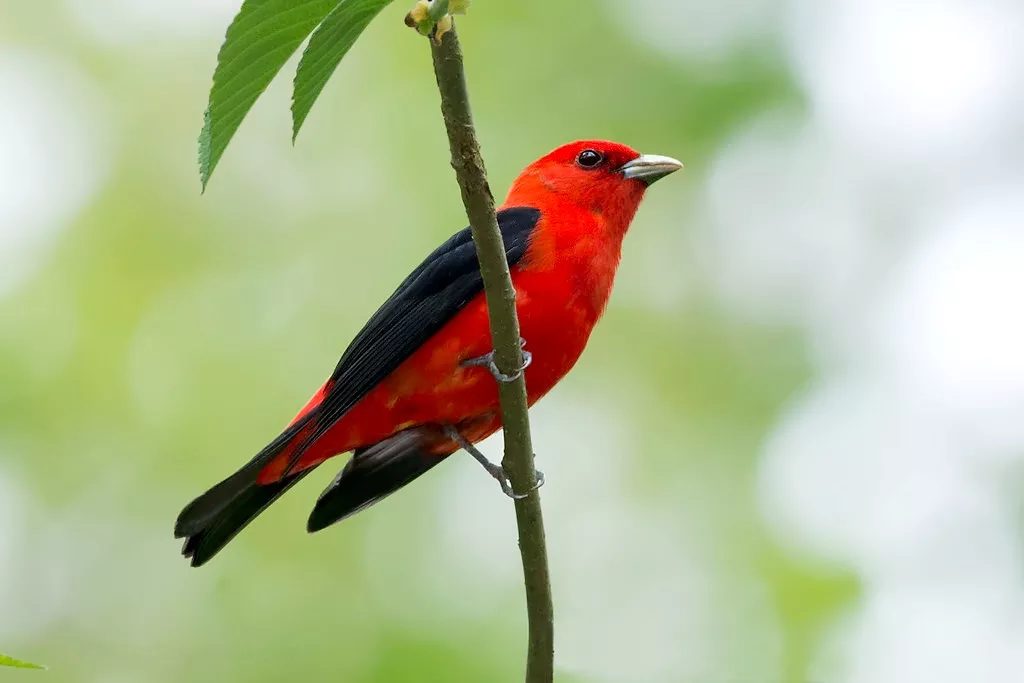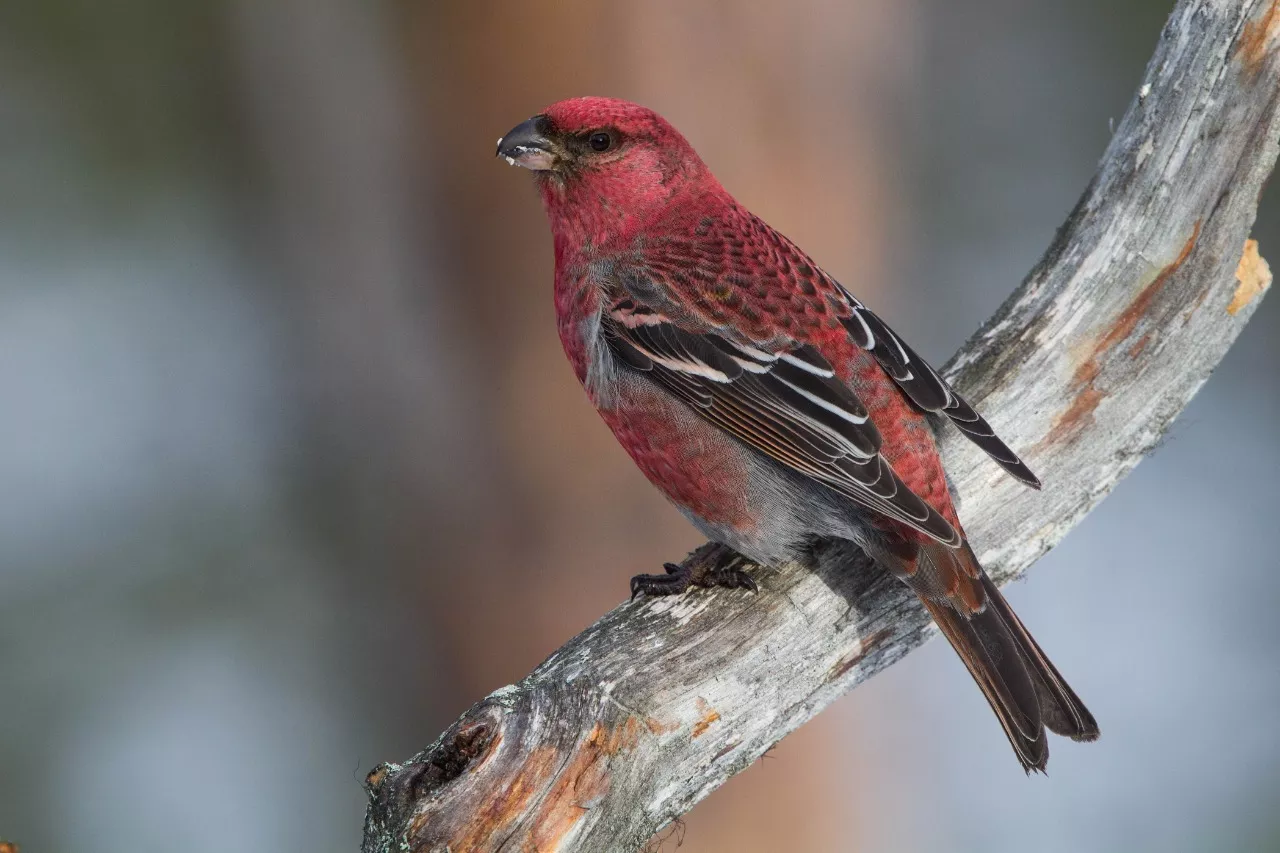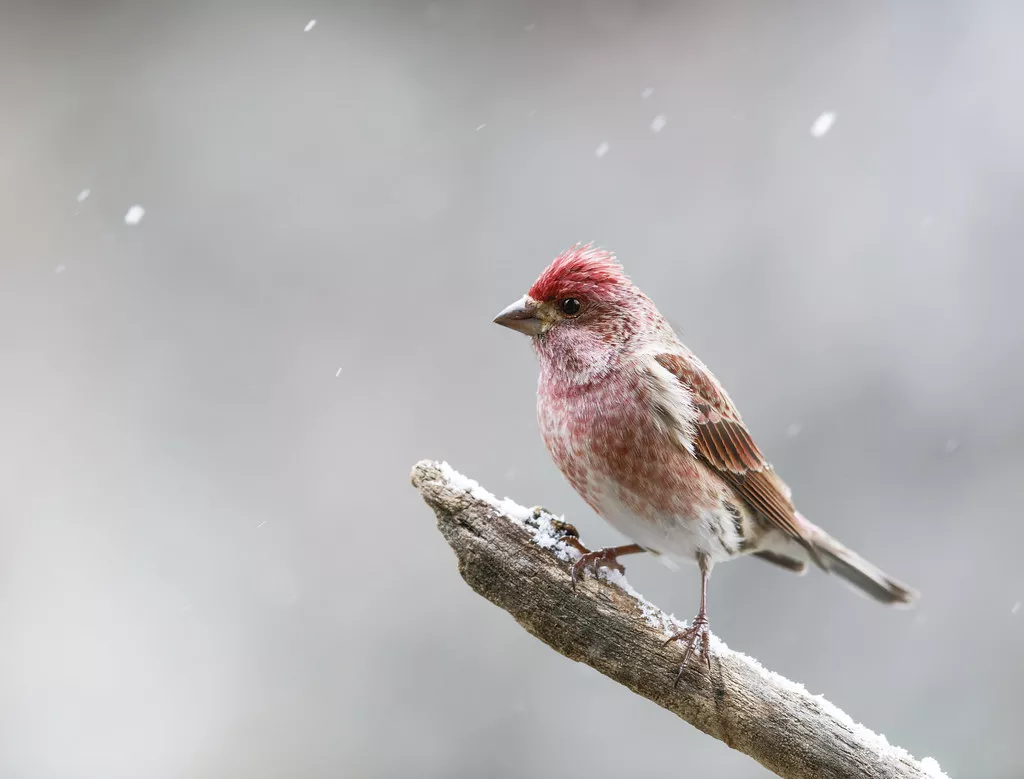Oregon is a state known for its stunning natural beauty, including its picturesque coastlines, majestic mountains, and sprawling forests. It’s also home to a diverse range of bird species, including the striking red bird. These birds are known for their vibrant red plumage, unique songs, and interesting behaviors, making them a favorite among birdwatchers and nature enthusiasts. In this blog post, we’ll explore the world of red birds in Oregon, from their preferred habitats and migratory patterns to the best locations for observing them in the wild. Whether you’re an experienced birder or simply interested in learning more about the natural world, join us as we discover the fascinating world of red birds in Oregon and gain a deeper appreciation for the state’s rich biodiversity.
Types of Red Birds in Oregon:
- Northern Cardinal
- House Finch
- Painted Bunting
- Summer Tanager
- Purple Finch
- Scarlet Tanager
- Red Crossbill
- Common Redpoll
- White-winged Crossbill
- Pine Grosbeak
- Pyrrhuloxia
Northern cardinals

Image Source
- Scientific name: Cardinalis cardinalis
- Life span: Up to 15 years
- Size: 21 cm (8.3 in)
- Weight: 33-65 g
- Origin: Eastern and Central North America
Male Northern Cardinals are distinguished by their distinctive red plumage, beak, and spiky mohawk-like hair. Northern cardinals are dimorphic birds, with both sexes being nearly totally distinct in color.
Females have red parts on their tails, and wings, and preserve the red beak, with the rest of their plumage being a pale brown.
In the wild, these birds typically live for 3 years, while some have been reported to survive for up to 15 years, which is an unusual lifespan for tiny birds like cardinals.
The majority of Northern cardinals may be found in southeast California, where they spend most of their time hunting and eating tiny insects, fruits, berries, and seeds in woodland borders, thickets, residential gardens, cities, and desert washes.
House finch

- Scientific name: Haemorhous mexicanus
- Life span: Up to 11 years
- Size: 12-15 cm (4.7-5.9 in)
- Weight: 16-27 g
- Origin: North America
Male house finches have predominantly brown plumage with a red gradient running up from the breast to the face. Females are typically brown and white and are less colorful.
At altitudes below 6,000 feet, these little birds spend most of their time in the dry desert, desert grassland, chaparral, oak savannah, streamsides, and open coniferous woods. They may be found in these habitats mostly grazing on weed seeds, berries, various fruits, and tiny insects in order to stock up on protein.
House finches have a rather long lifetime in the wild, where they may survive for roughly ten years, while captive finches have been known to live for twelve years.
Scarlet tanager

Image Source
- Scientific name: Piranga olivacea
- Life span: Up to 10 years
- Size: 18 cm (7.1 in)
- Weight: 22-28 g
- Origin: North, Central, and South America
The Scarlet Tanagers are stunning birds with eye-catching blood-red bodies and highly defined jet-black wings and tails that flash their magnificent plumage.
These songbirds live in deciduous woods and sit high in the forest canopy and mostly eat insects. They are difficult to see but their rich burrow songs may help in identifying them.
During the autumn, songbirds migrate to South America, changing their stunning red feathers into yellow-green ones.
Purple finch
Image Source
- Scientific name: Haemorhous purpureus
- Life span: Up to 7 years
- Size: 14 cm (5.5 in)
- Weight: 20-25 g
- Origin: North America
The purple finch is a beautiful tiny bird renowned for its unusual appearance. Despite having the name “Purple Finch,” these adorable tiny birds really have a pinkish-red color. Similar to other bird species, the females lack the rosy red coloring, while the males are more flamboyant and show off their gorgeous colors.
These finches often live in coniferous woods, shrublands, and fields, where they nest and perch while singing their lyrical songs. They are uncommon in metropolitan centers because they prefer to remain far from the activities of the human population.
Summer tanager

Image Source
- Scientific name: Piranga rubra
- Life span: Up to 8 years
- Size: 16 cm (6.3 in)
- Weight: 22-27 g
- Origin: North, Central, and South America
Male summer tanagers are almost all red, with a gray/silver beak. Females, on the other hand, are nearly all yellow, making these birds as dimorphic as they get. Summer tanagers spend most of their time in the gaps and borders of open deciduous or pine-oak woods.
While on the move, these red birds will chase insects such as wasps, bees, and caterpillars, as well as consume fruits, tiny berries, and rare seeds.
Tanagers live for around 5 years in the wild, which is about average for other wild birds, while captive summer tanagers are likely to live longer, similar to most other birds.
Red crossbill

Image Source
- Scientific name: Loxia curvirostra
- Life span: Up to 10 years
- Size: 15 cm (5.9 in)
- Weight: 26-39 g
- Origin: North America and Europe
Red Crossbills are recognizable by their reddish-orange feathers with grey wing feathers and beaks that tend to cross over one another as their name crossbill implies. Females, like summer tanagers, have a richer golden color with grey parts blended throughout.
Because of their urge and need to eat pine seeds, these crossbills spend most of their time in coniferous woods. Red crossbills may be found as long as there are pine trees around. This is why some of these birds may be found in heathlands.
Red crossbills eat spruce, pine, Douglas-fir, hemlock, larch, and tiny insects throughout their rather lengthy lives of 8+ years in the wild.
Painted bunting

- Scientific name: Passerina ciris
- Life span: Up to 8 years
- Size: 11-13 cm (4.3-5.1 in)
- Weight: 12-17 g
- Origin: North America
With stunning blue, red, green, and yellow feathers, the Painted Bunting is one of the most colorful and spectacular kinds of birds, and it is a sight to see.
The Buntings, which are members of the Cardinal family, have a striking combination of colors, with vivid red feathers identifying the lower body. The females, on the other hand, are fully covered in green fur.
The brilliant songbirds often live in the woods and woodlands. They graze in swarms and sing lovely wandering melodies together. These birds are very social.
Pay attention to the metallic chip sounds if you’re attempting to locate these birds in the jungle.
White-winged Crossbill

Image Source
- Scientific name: Loxia leucoptera
- Life span: Up to 4 years
- Size: 5.9-6.7 in (15-17 cm)
- Weight: 29 g
- Origin: Northern parts of the United States
White-winged Crossbill finches have long, crossed beaks. Males have red wings and tails, as well as two white wing bars. Females have two white wing bands and are yellow and brown.
White-winged When cone harvests are weak farther north, Crossbills reside in woods in Canada, Alaska, and possibly northern US states. They may be seen munching on seeds in spruce woods.
Unlike other birds, these birds may reproduce at any time of year as long as there is adequate food. They often heard in big groups.
Common Redpolls

Image Source
- Scientific name: Acanthis flammea
- Life span: 2 to 3 years
- Size: 4.5 and 5.5 in
- Weight: 12 and 16 grams
- Origin: southern Canada and the northern states
These common redpolls are distinguished by their red, white, and brown plumage, which includes a red and white forehead and breast, as well as brown and white wings. Females have a little patch on their forehead as well, but the rest of their body is brown and white.
A common redpoll may be found in boreal woods of pines, spruces, and larches.
These birds consume seeds from birch, alder, and spruce trees, as well as a variety of tiny invertebrates such as caterpillars, beetles, flies, and so on.
The highest lifespan for a redpoll was roughly 7 years and 10 months, however, the majority of redpolls spend far shorter lives, between 4 and 5 years.
Pine Grosbeak

Image Source
- Scientific name: Pinicola enucleator
- Life span: Up to 10 years
- Size: 22-24 cm (8.7-9.4 in)
- Weight: 40-80 g
- Origin: Northern North America and Eurasia
Pine Grosbeaks are distinguished by their greyish-white wings and tail feathers, red body and head, and black beak and feet. Female grosbeaks are not nearly as colorful as males, having plumage that is mostly light grey with touches of orange around the body and tail.
Pine Grosbeaks spend most of their time in coniferous woodlands, where they may rest on a horizontal branch to hunt tiny insects, seeds, buds, berries, and other refreshing foods.
These birds have been observed to survive up to 9 years old, sometimes even longer, indicating that they have reasonably lengthy lifespans for birds of their size.
Pyrrhuloxia

Image Source
- Scientific name: Cardinalis sinuatus
- Life span: Up to 10 years
- Size: 20-23 cm (7.9-9.1 in)
- Weight: 42-50 g
- Origin: Southwestern United States and Mexico
The Pyrrhuloxia is a member of the Cardinal family, often known as Desert Cardinals, and lives in the sweltering deserts of Southwest America.
With its spruce grey and red feathers, this bird appears just as stylish even if it does not have fully red plumage like the cardinal. It may be distinguished from northern cardinals by its robust yellow beak and taller, more beautiful crest of feathers.
These musical desert birds are strong because of the hard climate and become more aggressive during the mating season. However, during the winter, when they congregate in big flocks, sometimes numbering up to 1,000, they become highly social, setting aside their differences.
Conclusion:
In conclusion, Oregon is home to many beautiful red bird species. Whether you’re an avid birdwatcher or just enjoy the occasional glimpse of a feathered friend, there are many opportunities to spot these colorful creatures in Oregon’s forests, parks, and backyards. From the stunning Scarlet Tanager to the elusive Northern Cardinal, these red birds add a vibrant touch to Oregon’s already breathtaking scenery.
Frequently Asked Questions:
What types of red birds can be found in Oregon?
There are many species of red birds that can be found in Oregon, including the Northern Cardinal, Scarlet Tanager, and Red Crossbill.
Where can I go birdwatching in Oregon?
There are many great birdwatching spots in Oregon, including the Malheur National Wildlife Refuge, the Columbia River Gorge, and Crater Lake National Park.
What is the best time of year to spot red birds in Oregon?
The best time of year to spot red birds in Oregon is generally during the spring and summer months when many species are breeding and nesting.
What can I do to attract red birds to my backyard?
To attract red birds to your backyard, consider providing food sources like sunflower seeds and suet, as well as natural shelters like trees and shrubs. Additionally, providing a bird bath can help attract birds to your yard.
Are red birds endangered in Oregon?
While some red bird species are listed as threatened or endangered in other parts of the country, none are currently listed as such in Oregon. However, it’s important to protect and preserve their natural habitats to ensure their populations remain healthy.



![12 Species Of Hawks In Louisiana [Images + Ids]](https://birdsology.com/wp-content/uploads/2023/02/17484880426_04703d85b4_b-600x400.jpg.webp)
![10 Species of Hawks In Minnesota [Images + Ids]](https://birdsology.com/wp-content/uploads/2023/03/33412118934_ef109a73f8_b-600x400.jpg.webp)
![8 Types of Owls in Louisiana [Images + Ids]](https://birdsology.com/wp-content/uploads/2023/03/44723111885_a464d2a6a0_b-600x400.jpg.webp)
![7 Types of Doves in Kentucky [Images + IDs]](https://birdsology.com/wp-content/uploads/2023/09/51966837857_e62c6fbc37_b-600x400.jpg.webp)
